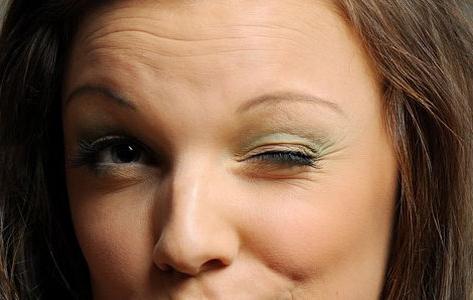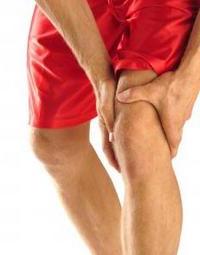Antipyretics for children are prescribed by a pediatrician. But there are emergency situations with fever when the child needs to be given medicine immediately. Then the parents take responsibility and use antipyretic drugs. What is allowed to be given to infants? How can you lower the temperature in older children? What medications are the safest?
It is often difficult to differentiate prolonged muscle contractions of central and peripheral origin from each other. Pathological muscle contractions with increased muscle tone often occur when the central nervous system. Thus, a violation of inhibitory influences from the central nervous system can lead to pathological muscle contraction, characteristic of spasticity, rigidity or paratonic rigidity. Lesions of the basal ganglia associated with impaired neurotransmitter release can lead to the development of dystonia (Chapters 15 and 16).
Abnormal muscle contractions can occur when individual components of a motor unit: motor neuron, peripheral axon, neuromuscular junction, or muscle fibers are repeatedly depolarized. Lesions of the contractile apparatus of the muscle cause contractions that are not caused by electrical activity.
Motor neuron lesions. The term cramp is often used by patients to describe a painful, involuntary contraction of one or more muscles. Muscle cramps can occur during spontaneous bursts of activity in a group of cells in the anterior horns spinal cord followed by contraction of many motor units. EMG records bursts of motor unit activity with a frequency of up to 300 per 1 s, which is significantly higher than that observed during voluntary contractions. Cramps usually occur in the muscles lower limbs, more often in older people; after severe cramps, soreness and signs of muscle fiber death remain, including an increase in serum creatine kinase levels. Cramps in calf muscles are so widespread that they are not considered a sign of serious illness. More generalized seizures may be a sign of chronic motor neuron disease, such as amyotrophic lateral sclerosis. Particularly painful cramps occur in women during pregnancy, in patients with disorders electrolyte balance(hyponatremia) and in patients undergoing hemodialysis. Repeated spasms limited to one muscle group indicate damage to the nerve root. In many cases, it is impossible to determine the cause of seizures. Benign convulsions, which usually occur at night, are treated with quinine. Other causes of pathological muscle contractions that occur against the background of damage to motor neurons include tetanus (Chapter 99) and rigid man syndrome. In both cases, interruption of the inhibitory signals descending to the anterior horn cells of the spinal cord leads to repeated bursts of motor neuron activity, which manifests itself in the form of powerful painful muscle contractions. Similar symptoms can occur in acute strychnine poisoning. Diazepam reduces spasms, but in doses necessary to reduce muscle contraction, it can cause respiratory depression.
Peripheral nerve. Increased excitability peripheral nerves may cause the development of tetany, a phenomenon characterized by muscle contractions predominantly distal sections limbs - hands (carpal spasm) and feet (pedal spasm), or muscles of the larynx (laryngospasm). Contractions are initially painless, but if prolonged they can lead to muscle damage and pain syndrome. In the case of severe tetany, the back muscles are involved in the process, which leads to opisthotonus. Tetany, as a rule, develops against the background of gynocalcemia, hypomagnesemia, and with severe respiratory alkalosis (see Chapter 336). Idiopathic normocalcemic tetany, or spasmophilia, can occur either sporadically or as a hereditary pathology.
Spontaneous muscle contraction - tic - can manifest itself in the form of wrinkling of the forehead, blinking of the eyes, opening of the mouth, sniffing, twitching of the cheek, lip. Such disturbances include squeaking, coughing, and choking. Twitching of the torso, neck, less frequent and more pronounced in amplitude than, for example, shaking the head, shuddering, and others, are characterized as hyperkinesis. It should be said that voluntary muscle contraction is more typical for adults. Tics often appear, usually in children around six years of age. Doctors estimate that approximately ten percent of children have these disorders. In some cases, such disorders intensify with the onset of puberty and decrease as they grow older.
Involuntary muscle contractions in children
Often, adults regard a child’s hyperkinesis and tics as antics, self-indulgence, and grimacing. Parents begin to make comments and try to eliminate these manifestations with punishments or prohibitions. However, the child can only stop their manifestation for a while. Subsequently, the tics resume and often with even greater intensity. At the same time, conscious suppression of tics results in a rather serious increase in internal tension.  As a result, the child begins to have headaches, aggressiveness and irritability. Most often, these disorders, according to the observations of doctors, are observed in boys with choleric character traits and those who are somewhat behind their peers in physical development and growth. Despite a certain degree of mobility, these children have a lack of coordination of movement.
As a result, the child begins to have headaches, aggressiveness and irritability. Most often, these disorders, according to the observations of doctors, are observed in boys with choleric character traits and those who are somewhat behind their peers in physical development and growth. Despite a certain degree of mobility, these children have a lack of coordination of movement.
Involuntary muscle contraction in children: causes
Tics are the final link in a rather complex pathological process. A separate and very significant role in it belongs to the fact of hereditary transmission higher level excitability of neuromuscular fibers, excessive impulsiveness (sharpness) on the part of one of the parents, in particular the father, who also, as a rule, had disorders in childhood. Such tics, by the nature of their transmission, belong to the male pathological type.  However, they are also common for girls, especially those who look like their fathers. They often look somewhat larger and taller than their peers. In other words, such girls are characterized by somewhat advanced development in physical terms, accompanied by a lack of coordination of movements, general stiffness and awkwardness. Involuntary muscle contraction is provoked by excitability or tension accumulating from within. Due to various factors, these “clusters” have no exit or response. The sources of internal stress are different and belong to the category of factors that damage the brain (inflammation, bruises, asphyxia during childbirth), neuroses, and neuropathies. Often these sources interact and combine with each other. And the identification of the main cause is carried out in accordance with several limiting signs. There are quite a lot of facts indicating that involuntary muscle contraction is an additional, albeit painful, form of psychomotor discharge.
However, they are also common for girls, especially those who look like their fathers. They often look somewhat larger and taller than their peers. In other words, such girls are characterized by somewhat advanced development in physical terms, accompanied by a lack of coordination of movements, general stiffness and awkwardness. Involuntary muscle contraction is provoked by excitability or tension accumulating from within. Due to various factors, these “clusters” have no exit or response. The sources of internal stress are different and belong to the category of factors that damage the brain (inflammation, bruises, asphyxia during childbirth), neuroses, and neuropathies. Often these sources interact and combine with each other. And the identification of the main cause is carried out in accordance with several limiting signs. There are quite a lot of facts indicating that involuntary muscle contraction is an additional, albeit painful, form of psychomotor discharge.
Nervous tics have a number of varieties. Typically, it is classified according to the muscle groups that are involved in pathological process. Thus, nervous twitching of the facial muscles can be affecting the limbs, vocal (involving the vocal apparatus) and facial expression. Based on their distribution, they are divided into generalized (several muscle groups) and local (one muscle group). Also, nervous tics can be complex and simple. A simple twitching of the facial muscles is characterized by elementary muscle movements. A complex nervous tic is a whole complex of movements.
Nervous tics also vary in origin. Primary twitching of the facial muscles occurs in people in childhood. Boys are especially susceptible to this pathology. As a rule, the onset of this disease is preceded by some kind of psychological trauma. This form nervous tic happens on its own. It can last from several weeks to throughout life. Secondary nervous tics tend to develop after brain lesions (dysmetabolic or organic). Such lesions often include trauma, intoxication, encephalitis, and circulatory disorders in the brain. The last type is hereditary nervous tics.
Causes of involuntary twitching of facial muscles
The main causes of nervous tics include various damage to the nervous system. It is worth noting that their nature can also be different: increased intracranial pressure, previous meningitis, head injuries, circulatory disorders in the brain, birth or childhood injuries.
Important reasons for the formation of involuntary twitching of the facial muscles are psychological factors. Among them, the most common are emotional stress, fear, depression, anxiety, neurosis, etc.
Nervous tics, which are similar to involuntary swallowing, blinking and making sounds, occur due to hyperkinesis. There may also be a hereditary predisposition to nervous tics.
Nervous tics are a serious obstacle to socialization in society, but they are not considered a threat to life. Often, involuntary twitching of the facial muscles in children becomes the cause of bullying and ridicule from peers. In older age, this disease can cause stress and complexes.
A neurologist treats nervous tics. At the first symptoms of this disease, you should consult a specialist to prevent and avoid more serious consequences of the development of the disease.



